For the non-poker player, bluffing is what the game is all about. And it’s what makes poker unique among all card games.
You don’t need the best hand to win!
So, it’s understandable for beginning and intermediate players to want to know how and when to bluff. It’s what they’ve heard about the game too.
In this article pro poker player Ashley Adams will cover every aspect of bluffing, including:
Let’s get started.
Quick Story
I recently travelled to a distant city and won a poker tournament. After the tournament, I was home talking to a few friends – none of whom played poker – though they all knew something about the game.
One friend wanted to know if I would be on television. The other one asked me, “Did you bluff a lot?”
This bluffing guide is dedicated to all of you who think similarly!
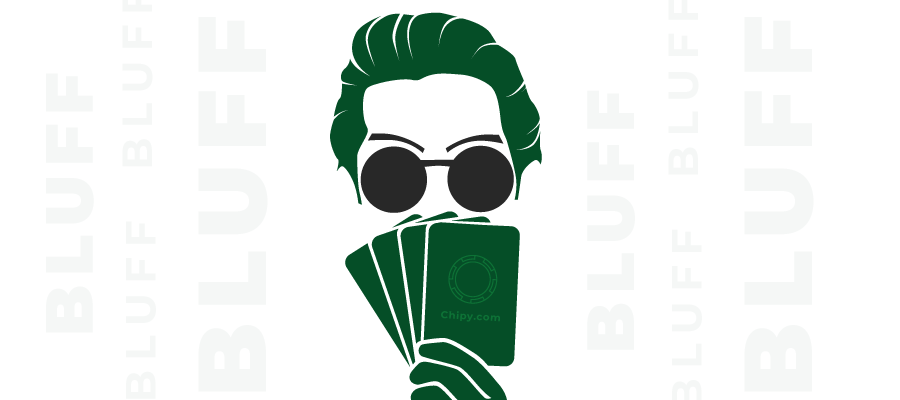
Poker is not really a card game played with money. It is a betting game played with cards.
Unlike gin, cribbage, whist, bridge or any other card game, little of the game has to do with the play of the cards themselves or the skill of using those cards to make hands or score points.
Especially with the most common variation of poker, known as hold’em, even card memory is hardly essential.
Chiefly, no limit hold’em poker is about the betting: when to bet, how to bet, how much to bet, and how to interpret and respond to your opponents' bets.
It is often said that poker is a game of incomplete information.
That is undoubtedly true.
Some cards are concealed. Because of that, it is also a game of deception – attempting to trick opponents into misevaluating the true strength of your hand, so they will act incorrectly.
There are two basic ways to deceive opponents about the true strength of your hand.
- You can represent strength when your hand is weak
- You can represent weakness when your hand is strong.
Bluffing is the former, an attempt to represent strength when your hand is weak.
A successful bluff represents a hand that is stronger than it really is, causing an opponent or opponents to fold their stronger hands, winning you the pot.
A Simple Example of Bluffing
Here's a quick example of a successful bluff:
You’re playing in a relatively tight $1/2 no limit game. You all have about $300. You’re in the Cutoff – one off the button.
- A player calls the big blind, the rest fold, and the action comes to you. You have Ah Kh. You make it $15. The big blind calls and the limper calls.
- The flop is Qh 7h 2c, giving you a 4-flush. The betting is checked to you. You bet $25. You get one caller -- the limper.
- The turn is the 2s, making the board: Qh 7h 2c 2s. The card does not improve your hand. Even so, to win the pot, you bet $40. You get called.
- The river is the 5d. The board is Qh 7h 2c 2s 5d. Your opponent checks. You bet $65. Your opponent folds.
Congratulations. You just carried off a successful bluff!
Successful bluffing involves the consideration of many factors. Below I have the ten most important ones.
1. Does your bluff tell a good and believable story?

Your better opponents are not likely to be fooled into believing your hand is strong unless each step leading to your final betting action is consistent – unless it makes sense.
If early in the hand, your actions indicate you are on a draw; but then your final action makes it look like you had a made hand from the beginning, you are unlikely to be believed.
2. Are your opponents bluffable?
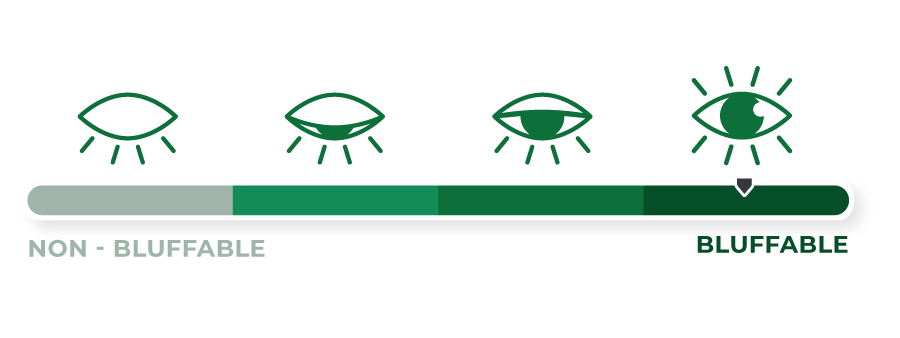
Some players are easier to bluff than others. This is true for many reasons, but chiefly because some opponents are more likely to want to call you down, no matter your betting action.
There is a useful expression in poker, “It’s easier to bluff a good player than a bad player.” This is because bad players often don’t notice much about your play.
They tend to focus simply on their own hand's strength and are largely oblivious to what their opponents are likely to hold. You don’t want to waste a clever aggressive move on a player who is not perceptive enough to recognize it.
Deception is largely wasted on them.
Similarly, though they may notice your play, and even be wise enough to recognize that your big bet means that you are likely to have a big hand, poor players often lack the discipline to fold their hand – even though they suspect you are probably stronger than they.
These players are heard to lament, “I’m probably beaten, but I can’t fold. I call!” Deception is largely wasted on them as well.
Pro tip
The ideal target for your bluff is a player who is at least wise enough to notice what your betting action means and disciplined enough to fold to a large bet if he thinks he’s behind. For the most part, save your bluffing attempts for them.
3. What is your opponent's image?
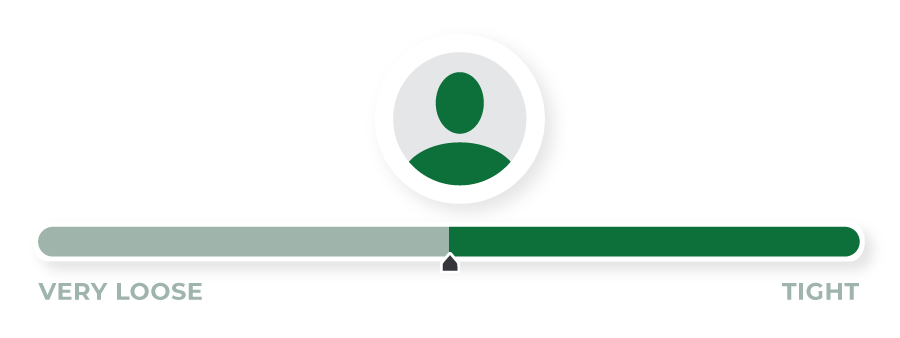
This is really a subset of the consideration above, whether your opponent is bluffable.
The best target of a bluff is a player with a tight image.
They don’t have to be the very nittiest player in the room; but they should at least be known to you to fold, even after they have entered a hand.
On the other hand, if an opponent tends to be very loose – or worse, a calling station whose habit is to call until the river, then your bluff is not likely to be successful against them.
4. What is your opponent's recent history at the table?
There are times when players are more and less likely to be good targets for bluffing. An opponent who, for external reasons, is less interested than usual in playing a hand, is a good target.
- A player who has just won a hand and is still stacking their chips tends to be more willing to toss in their cards to a bet, not wanting to be disturbed in their primary task of stacking their chips.
- A player who is down near the felt is often a bad target of a bluff because they are fatalistic and ready to throw caution to the wind and take their chances for their few remaining chips.
- A player who is getting ready to leave for the day or go to a meal, and has someone waiting for them, but is just playing around to their blind, is a good target for a bluff, as they are less likely to want to have to get involved in a hand.
- A player who has been raised and folded a few times in a row, is often more likely to “take a stand” and call you, and less likely to be a good target of a bluff, not wanting to be thought weak.
It is harder to bluff a player who already has committed chips to a pot.
Some players, especially mediocre and poor players, are more likely to call your raise if they have already called a bet, figuring “in for a penny, in for a pound”.
Similarly, players like that are harder to get to fold if they initiated the betting. (Good players, on the other hand, are able to release their hand even if they started the betting and are raised).
5. Position
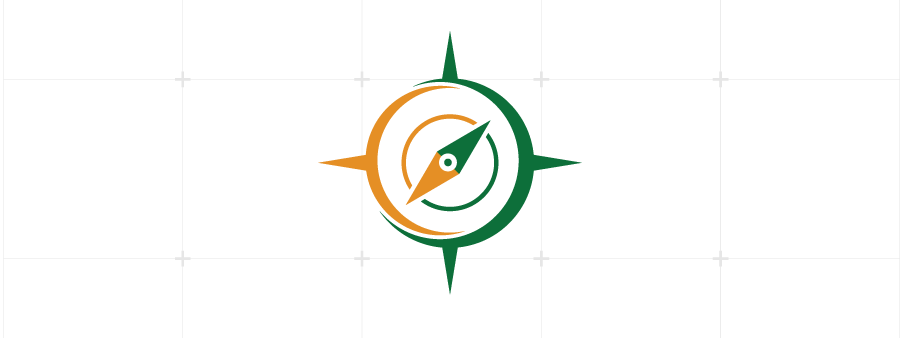
As mentioned in my previous guide, position matters hugely when it comes to bluffing (as it does to just about all betting action). Bluffs are generally easier from late position, when fewer players remain.
Players in early position are less likely to call a late position raiser.
They realize, if they are good, that they will not be in position for the remainder of the hand, and so they are more likely to fold to your aggression.
On the other hand, a player who remains after you, and will have position on you for the remainder of the hand, is more likely to call your bet or raise.
Paradoxically, however, good players are also aware that a raise from early position is likely to indicate greater strength than a raise from later position.
Accordingly, they may be more likely to believe an early position raise than a late position raise.
6. What is your image in the mind of your opponent?

It’s not enough to consider the image of your opponent. You must also look at yourself in a mirror, and consider what your image is in your opponent's mind.
Significantly, this is not a consideration of how you really play.
Rather, your image is the product of how you have played recently in front of your current opponents.
Except for a player who has an extensive record of your previous play, or a player who knows you from having played with you for many previous sessions, for the most part your image is based on how you have played recently – probably no more than the last few hours – and often just the last few hands.
Been on a hot streak and been betting aggressively a lot lately? You probably have a loose and aggressive image, even if you are at heart a very tight player.
Folded every hand the last 20 minutes?
You are probably seen as a rock to the observant opponents, even if you generally are a loose-aggressive player. It matters little or not at all what kind of a player you know yourself to really be.
What’s important is your image to the relatively new and superficial observer who is trying to decide whether or not you are bluffing.
7. Has your opponent given off any tells that may be a window into the likely strength or weakness of their hand?

If they are giving off tells of weakness, they are better targets for a bluff.
Here are a few signs that an opponent is weak and would prefer you not to bet, and is more likely to fold his hand to your bluff.
When opponents exhibit these tells, your bluff is more likely to succeed:
- They grab their chips before it’s their turn to act. This usually indicates weakness. They want to fake you out, by appearing eager to bet, in the hope you’ll check and they will get a free card. While this is not 100% reliable (some really new or otherwise bad players do this sincerely when they are excited about their hand), more often than not this ploy means weakness; and you should be more inclined to bet into them.
- They glare at you when you are about to bet. This usually indicates weakness and a readiness to fold to your action. Once again, they simplistically want to trick you, with their body language, into thinking that they are strong – toughly staring you down. Usually, but not as reliably as the prior tell, they are weak, and a bet will get them to fold.
- They have looked at their cards and hold them as if they are about to fold. This is often a barely conscious move from a player who is about to toss his hand away. They’re getting ready to do so; and will release their hand as soon as it is their turn. Yes, it can be faked of course. But most of the time it means what it appears to mean – they are about to fold. If you’re on a bluff, oblige them!
- They look at the board, quickly check their chip stack, and then look away. This typically means strength. They look at their chips because their cause is strong enough to bet; then they look away to disguise their interest in their hand. When I see this, I am very reluctant to bluff into them.
- They are talking to me about either their hand or mine. While it’s true that some players do this when they are weak, typically players start to engage others in a discussion of their hand when they want action. Not always, but more often than not, this indicates a bad time to attempt a bluff
8. Does your hand have a way to become a winner if your bluff fails (semi-bluffing)
There are, generally speaking, 3 types of bluffs.
There is a naked or pure bluff – a bet that can only win if your opponent folds. Did you miss your flush on the river? Make a big bet. If you’re called, you lose; if your opponent or opponents fold, you win. That’s a pure bluff (and often a bad one).
There is the semi-bluff. I call it a bluff with a back-up plan.
You make a bet without a made hand, as a bluff, but with a hand that could improve to a winning hand on a future betting round, if the bluff fails to get the opponent to fold.
In essence, it has 2 ways to win: You either convince your opponent to fold right then, or, you get a card that improves you, and may propel you to a winning hand.
Here’s an example of a semi-bluff:
You have Ah 4h. You’re in early position. You called the $2 big blind, the button raised to $10. The big blind called and so did you. The flop is 8h 7h 3s, giving you a 4-flush. You bet $25. That’s a semi-bluff. You only have Ace high, So you’re happy if your two opponents fold. That would be a winning bluff. But even if the bluff doesn’t work and they call, you still have a back-up plan for winning, with nine outs to the nut flush draw.
Finally, there is a value bluff, also known as a semi-demi-bluff. This is a bet with a hand that has three ways to win: as a bluff, by improvement, and with some showdown value even without improvement.
Here’s an example of a semi-demi-bluff:
Imagine the hand above, but instead of holding Ah 4h you hold Ah 3h. The flop of 8h 7h 3s gives you bottom pair and top kicker. You bet it the same way. But unlike the semi-bluff version, you also have a hand with at least some small amount of value, as you have a pair. You have some small chance of winning at showdown.
That’s a value bluff or a semi-demi-bluff.
9. Stack size
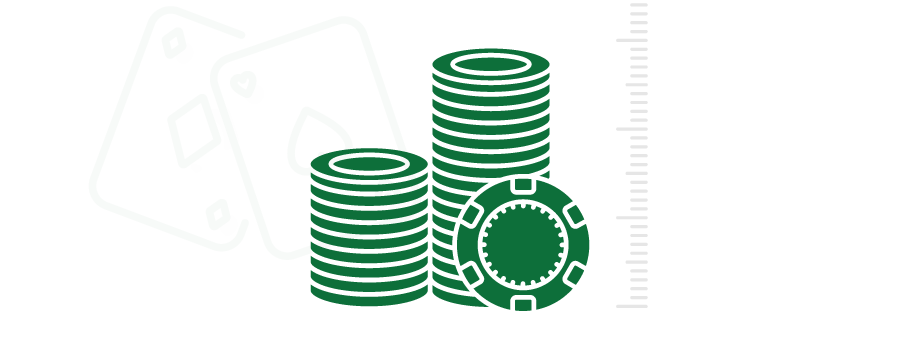
Stack sizes are important when you are considering a bluff.
If the pot is $300 and your opponent only has $30 left, your shove will have little chance of succeeding as a bluff – since he is getting 11 to 1 odds on a call.
On the other hand, if the pot is $50 and you have an effective stack of $300, and bet $100, your opponent is only getting 3 to 2 odds – and has to be much more certain that you’re bluffing to call.
All too often, I see players bluffing without regard to their opponent’s stack – thinking that the act of betting itself will be enough to win them the pot.
This is true for another reason as well – implied odds.
If you are representing a made hand, with more cards to come, you still must think about an opponent who might call you because he has a drawing hand and is thinking he might win more money if he hits his hand – thus getting good implied odds for his call.
I will illustrate this through an example:
Let’s say that you raised pre-flop, were called, the flop was something two-suited, and you bet again, were called, and now the turn comes, and you are trying to represent an over-pair or two pair, and want your opponent to fold.
You have position; your opponent checks, and you are fashioning a bet. The pot is $300. You each have very deep stacks. How much should you bet?
If you want to discourage a call, you must bet enough to make the call mathematically wrong for the likely draw. Otherwise, even if you convince your opponent that you have the hand you’re representing, your bluff will fail, because you’ll be giving him the right price for a call.
Imagine this hand with $300 in the pot.
The two-suited board convinces you that your opponent is drawing to a flush. Don’t bet less than $100. If you bet $75, for example, with a pot of $375, and deep stacks, your opponent would almost surely call even if he could see that you had AA.
He’d be getting sufficient pot odds for the call, even if you had the Aces. For your bluff to succeed, you’d need to bet $100 or more.
And, you might decide that no bet would do the trick; correctly giving up on the bluff right there.
10. How many opponents do you have?
It is usually easier to bluff a single opponent than multiple opponents. With fewer opponents, there are fewer people who have to believe you.
Similarly, with one opponent, you are less likely to face someone at the top of their range, who will call you down no matter what you are representing.
On the other hand, paradoxically perhaps, with many opponents who have already shown weakness, a bluff sometimes makes sense, as the others figure you wouldn’t try to steal the pot from many opponents.
Here are some of the key terms and plays you can combine with poker bluffing to maximize your chances of success:
3-betting, 4-betting, and 5-betting Light
“Betting light” refers to the strength of your hand relative to the typical strength of a hand needed to carry out this action.
For example
When you are 3-betting light, you are 3-betting with less than the typical extremely strong hand, usually needed to make a 3-bet.
Put another way, 3-betting light would be expanding your range beyond the very narrow range of hands you typically need to make such a bet.
If, for example, from middle position, you’d need the top 5% or so of hands (AK, JJ+) to 3-bet someone who opened in early position, and you 3-bet with Ah 9h, that would be called 3-betting light.
Similarly, if the bet is raised, 3-bet, and then 4-bet, and you 5-bet with less than Aces or Kings, you’d be said to be 5-betting light.
There are times when this makes sense, chiefly when stacks are deep, you know that your opponent is likely to be betting light, and is also capable of folding to a raise.
Float Play

A float play is a call with the intention of taking the pot away from the initial bettor by either raising on a future street or betting after he checks.
It’s a move that works well against overly aggressive opponents who give up on their hand after their aggression is not rewarded in either the first or second betting round.
Typically, it is done from late position, calling an opponent who is prone to bet a wide range and then c-bet the flop.
Since they initiate and continue the bet with a large range, your bet or raise can often knock them off their hand, winning you the pot, even with a hand of little or no intrinsic value.
Squeeze Play
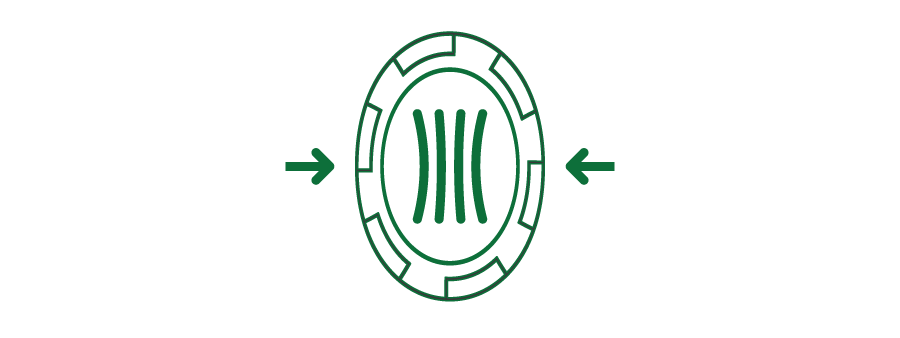
A squeeze play is a type of bluff that typically involves three players pre-flop.
First player raises the blind, second player limps, and then you, the third player 3-bets.
This gives you an opportunity to win a fairly sizable pot without seeing a flop, as the first player will often fold, thinking you must be very strong to raise him and a limper; and the limper is also likely to fold, as his limp indicated weakness to begin with.
But even if this bluff doesn’t succeed in winning you the pot outright, another outcome is favorable for you.
If you get a call from one player or both players, you have a positional advantage going into the flop. (Of course, if you are 4-bet, you almost surely have to fold).
Fold Equity
Fold equity is a numeric way of estimating how likely you are to get your opponent to fold when you bet, typically as a semi-bluff.
It’s especially useful when considering the total chances that you will win the hand with a bet, adding together your hand’s likelihood of winning on its own merits plus the ability to win with the bet itself.
It’s a way of putting a number on the total chances of winning with a semi-bluff.
Here's how to calculate fold equity and use it to figure out whether a semi-bluff attempt makes sense:
Let’s say you are on the turn and drawing for a flush.
You know your drawing odds are roughly 4 to 1. But you also realize that if you bet, there is a chance that your opponent will fold. That chance that your opponent will fold is your fold equity.
If you estimate that there’s a 30% chance they’ll fold, then your fold equity is 30%. If you figure there’s as good a chance as not that they’ll fold to your bet, then your fold equity is 50%. When you add to this fold equity the chances that you will improve to the better hand, you might turn a losing draw into a winning play.
Here’s an example of using fold equity to justify a bet:

You have Qh Jh. The board on the turn is Kh 8h 3c.7s. You have a flush draw.
Your strong opponent, on the turn, bets $150 into the $250 pot. A third opponent folds. You have an effective stack of $500. You have one opponent, and you have position on him. You count nine outs – the nine hearts that will give you a flush.
How do you decide whether to call, raise, or fold?
The equation involves figuring out your drawing odds and your fold equity.
We know with mathematical certainty that you have a 19.6% chance of hitting your flush on the river. Let’s call it 4 to 1 against you. You’re being offered pot odds of only 5 to 3. That’s woefully insufficient pot odds to warrant a call with that 4 to 1 against you.
So you’re tempted to fold. But wait! There’s another line to consider.
What if you raised, representing a set, and shoving for $500 into the $400 pot? Might that action make sense?
There are only two possible responses: Our opponent could fold or call. If they fold we win the $400 pot. And if they call, we win the pot 20% of the time. Might a shove make sense?
It comes down to how often we think our shove will induce our opponent to fold.
That’s our fold equity.
If we decide that a raise will always induce our opponent to fold, then it’s a no-brainer. We will always win the $400 pot. We will never lose our $500 shove. Our equity is 100%. And we should always raise.
But, that’s rarely the case.
What if we think that it’s as likely as not that our raise will succeed?
That would put our fold equity at 50%. 50% of the time we win $400, when our opponent folds to our shove. The drawing odds are 10%. (20% of the 50% when we don’t win with our raise) of the time we win $1400, when our flush draw comes in and we win the whole pot.
And 40% of the time (80% of the 50% of the time when we don’t win the whole pot), we lose our raise of $500. Add that all up and you get +$200 +$140 - $200 for a net gain of +$140. If that were the case, it would make sense to shove – thanks to our fold equity of 50%.
Remember
Fold equity is not precise, of course, as there is no way to estimate precisely how an opponent will react to a raise with complete accuracy. But, we should try to put a number on it to decide whether it makes sense. Sometimes it is the best option.
Bluffing Outs
You will often think about how many outs you have; and whether a call might be worthwhile because of those outs. But sometimes, there are additional outs that can give you an opportunity for a credible bluff.
Consider the following hand:
- You have As Js. You raised pre-flop in middle position, bought the button and you now have one caller. You have position on the villain, who is a very good, disciplined player.
- The flop is Qh 9s Th. Your opponent bet and you called with your straight draw and your back-door spade draw. You have an effective stack of $500 or so.
- The turn is the 2c. Your opponent bets $100 into a $200 pot.
Do you call?
The answer is an almost certain yes. Not because you are getting the right price for your straight draw. You aren’t. You’re getting 3 to 1 pot odds; and, with your 8 outs, your drawing odds are roughly 5 to 1. But you have something else going for you.
In addition to the 8 outs for the straight, you have another 7 bluffing outs (Remember, 2 of the flush outs are also straight outs), that would give you a credible bluffing hand. If a heart hits, your sharp and cautious opponent is likely to check. If you then bet, they’re likely to fold – wanting to deny you any further profit on what will appear to be you hitting your flush.
Those additional seven outs give you a total of 15 outs, giving you drawing odds of a little better than the pot odds of 3 to 1. This is a profitable play.
Conclusion
Bluffing is both an art and a science.
The successful poker player needs to master the basic methods, as described above, for using deception in their play.
A good bluff will tell a convincing story – from start to finish, causing the thoughtful, observant, and disciplined player to conclude that based on all of your actions in the hand, and the type of player you are, your betting indicates a hand stronger than theirs.
There are many ways to do this.
In general, it is better to bluff in situations when you have a way to win other than by the bluff itself. Semi-bluffing and value bluffing or semi-demi-bluffing is usually a better alternative than simply relying on the power of a bluff alone to win a pot.
Please refer to my other poker tutorials to learn more about all the concepts required to master the game and be on your way to becoming a pro!

Bonuses
Casinos
Games
Academy
News
Shop
NEW Q&A
Sweepstakes






























